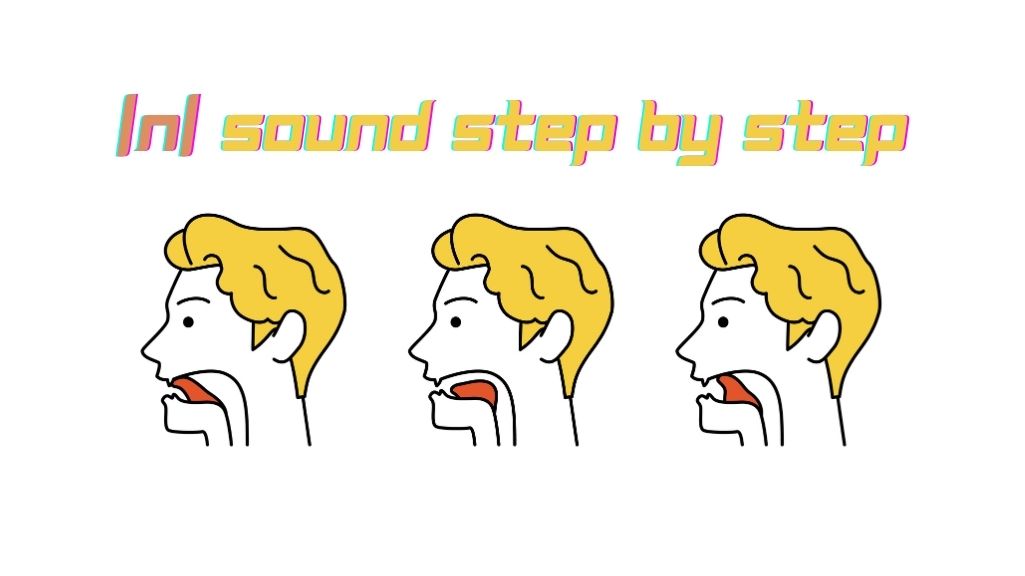
Hey there! I’m Emma, your American Accent Coach—and today we’re diving into a sound you probably think you already know: the American N sound. At first glance, /n/ seems easy. It’s one of the first sounds babies produce, and it exists in many languages around the world. Words like no, name, sun, dinner—they all feel straightforward, right? But here’s the catch: in American English, N sound isn’t always as simple as it looks.
In this guide, we’ll break N sound down step by step: how it’s made, how it behaves in real speech, the confusing spelling patterns, common learner mistakes, and plenty of practical exercises. By the end, you’ll see that this “simple” sound is actually a key to unlocking fluent, connected American English.
You might be wondering, “Okay, Emma—it’s just /n/. Do I really need to spend time on it?” The answer is yes! Here’s why:
The N sound is actually the most common consonant in American English. That means it shows up constantly—in little words like in, on, an and in bigger ones like dinner, banana, connection. So if your /n/ is a little off, those small mistakes will pile up and affect the overall clarity of your speech.
But here’s the bigger picture: /n/ sound isn’t just one simple sound. In real, fast American speech, it’s a shape-shifter. It can:
When you master these little changes, your English stops sounding robotic and starts flowing like a native speaker’s. N sound is one of those “bridge sounds” that keeps speech smooth and connected. In other words—it’s small, but it carries a huge impact on how natural and fluent you sound.

Before we can master the /n/ sound in American English, we need to understand what it actually is. Think of this as the “blueprint” for the sound—how your mouth, tongue, and airflow all work together to create it.
✨ Quick self-test: Say “nnnnn” and then pinch your nose closed. If the sound stops immediately, congrats—you’re sending the air through your nose correctly.
All nasal consonants, like /m/ and /ŋ/, have something called a nasal murmur—a strong, low humming sound. But each nasal has its own “fingerprint”:
That’s how our ears can tell the difference between sun, sum, and sung.
Unlike /ŋ/ (which never starts a word in English), /n/ is super flexible:
This flexibility explains why it pops up so often and why it’s worth getting 100% right.
Now that you know what the N sound is, let’s get practical. How do you actually make it clearly and consistently?
Keep your jaw slightly open and your lips relaxed. No puckering, no rounding—this isn’t like /w/ or /o/.
Lift the tip of your tongue to the alveolar ridge (that bumpy spot behind your top front teeth). The flat part of your tongue (the blade) should also make light contact, and the sides of your tongue can gently touch your upper side teeth. Think “wide and flat” for stability.
Here’s the special trick: instead of letting air out of your mouth, lower your soft palate (the velum) so air goes through your nose. That’s what makes /n/ nasal.
Quick test: Say “nnnnn” and then pinch your nose closed. If the sound stops, you’re doing it correctly!
Turn on your vocal cords. /n/ isn’t whispered—it’s a voiced sound. You should feel a gentle vibration in your throat when you hold it out: nnnnn.
One of the most common mistakes learners make is turning /n/ into /ŋ/ (like the “ng” in sing). This happens if the back of your tongue tenses up and rises toward the soft palate.
✅ Fix: Keep the back of your tongue relaxed and low. Only the tip should be doing the work.
Here’s a neat trick: the tongue position for /n/ is almost the same as for /d/.
Try saying “da-na-da-na-da-na” in a steady rhythm. Notice how only the airflow changes, not the tongue position. This drill helps you lock in the correct placement for /n/.

If only English spelling were simple! Unfortunately, the /n/ sound shows up in a variety of spellings, and sometimes in places where the letter “n” doesn’t even get pronounced. But don’t worry—once you understand the patterns and history, it all starts to make sense.
✨ Quick tip: When you see nn, think “short vowel before it.” Example: dinner has a short /ɪ/ vowel. Compare it to diner, with just one “n,” where the /iː/ is longer.
Here’s where English gets interesting—and confusing. Some spellings show extra letters that used to be pronounced hundreds of years ago but aren’t anymore.
✨ Fun fact: If you see a “silent n,” check if it reappears when a suffix is added. Autumn → autumnal, condemn → condemnation. This shows that the /n/ isn’t totally gone—it’s just hiding depending on the word form.
The takeaway? Don’t just memorize spellings—pay attention to how native speakers actually say the word. English spelling is like a history book, but pronunciation is always about the present.
So far, /n/ has looked pretty straightforward—but here’s where things get fun. In real, fast American English, /n/ is a bit of a chameleon. It changes its shape and role depending on the sounds around it. These little shifts aren’t mistakes—they’re natural shortcuts that make speech smoother and more fluent.
Sometimes /n/ becomes the nucleus of a syllable, almost like a vowel.
✨ Quick practice: Try saying cotton, garden, certain slowly, then speed up, letting the /n/ “absorb” the vowel.
When /n/ is followed by another consonant, it often changes to match that sound. This saves your tongue from making extra movements.
These changes happen automatically for native speakers. If you practice them, your English will sound much smoother and more connected.
English loves to connect words instead of saying them separately. /n/ often acts like a little “bridge” between vowels.
Without this linking, your speech can sound choppy. With it, you’ll sound fluent and natural.
English is a stress-timed language, which means some syllables shrink or reduce to fit the rhythm. The syllabic /n/ and assimilation patterns are part of how American English keeps that bouncy, natural flow. When you master these, you’re not just improving your /n/—you’re improving your overall fluency.

Here’s the truth: in isolation, /n/ is pretty easy to make. But in real, flowing sentences, it loves to adapt, link, and transform so that English speech stays smooth and efficient. Let’s look at the key ways this happens.
When a word ends in /n/ and the next word starts with a vowel, the /n/ acts like a little “bridge” between them. Instead of a pause, the sounds connect:
???? Pro tip: If you separate these words too much, you’ll sound robotic. Let the /n/ glide naturally into the next vowel.
In fast, casual English, /n/ sometimes becomes its own syllable without a vowel.
???? Instead of saying “but-ton,” let the /n/ carry the syllable itself. Native speakers do this all the time, especially after /t/ and /d/.
To save time, /n/ often changes its “place of articulation” depending on the sound that follows:
These shortcuts are automatic for native speakers—and copying them will instantly make your English smoother.
English rhythm is stress-timed, which means some syllables shrink to fit the beat. The syllabic /n/ and assimilation patterns are part of that rhythm. Once you get them down, your English will sound more natural, less “spelled out.”
✨ Practice tip: Read a sentence slowly, then speed it up. Notice how the /n/ sound shifts or shortens naturally. Example: “I’ve hidden the button in the kitchen.” The faster you go, the more the vowels reduce and the /n/ carries the beat.
Understanding N sound is one thing—mastering it takes practice. Let’s look at the most common challenges learners face and the tools you can use to fix them.
Knowing your own language background helps you predict which errors to watch out for.
Minimal pairs are word pairs that differ by just one sound. They sharpen both your listening and your pronunciation.
✨ Try recording yourself reading pairs like sun–sung or net–let. Compare with a native speaker and adjust until you hear the difference.
Word lists (practice /n/ in all positions):
Phrases & Sentences:
Tongue Twisters (advanced):
Feedback Techniques
✨ Pro tip: Apps like ChatterFox can give you instant feedback using AI plus coaching from certified accent trainers. It’s like having a pronunciation mirror in your pocket.
Even though /n/ feels familiar, learners often run into subtle but important errors. The good news? Once you know what to listen for, they’re easy to fix.

Why it happens: The back of the tongue lifts toward the soft palate, turning /n/ into the velar nasal /ŋ/.
✅ Fix: Keep the back of your tongue relaxed and low. Only the tip should touch the alveolar ridge. Practice contrasts like ran–rang, win–wing.
Why it happens: In some languages (like Japanese), syllables usually end with vowels, so learners add one automatically.
✅ Fix: Hold the /n/ sound steady, then stop sharply—no extra vowel. Record yourself saying pen, sun, train and compare to native speakers.
Why it happens: In some languages (Mandarin, Korean), /n/ and /l/ overlap or don’t contrast strongly. The tongue placement is also close.
✅ Fix: For /n/, keep the tongue wide and flat, sealing against the alveolar ridge. For /l/, the tip lifts but the air flows around the sides of the tongue. Drill minimal pairs like net–let, nail–rail.
Why it happens: In some dialects of Spanish and other languages, final consonants weaken or disappear.
✅ Fix: Exaggerate the final /n/ when practicing. Say fiiiine-nnnn, then gradually shorten it to sound natural but still present.
Why it happens: Learners try to stick to spelling instead of natural rhythm.
✅ Fix: Practice syllabic /n/ by dropping the vowel: button → [ˈbʌʔn̩]. Shadow native speakers in phrases like “I’ve hidden the button.”
So, what started as “just the letter n” turns out to be one of the most important building blocks of fluent American English. From its basic alveolar placement to its role in linking words, shaping rhythm, and even changing form in connected speech, N sound is a true chameleon sound.
If you master it, you’ll notice three big changes in your English:
Here’s the roadmap moving forward:
Remember, even though /n/ looks simple, it’s a cornerstone of clear American English. Every small improvement you make here multiplies across your conversations.
And hey—you’ve already done the hardest part: building awareness. Now it’s just practice, practice, practice. Keep at it, and before long, you’ll hear your /n/ sounding just as natural as any native speaker’s.
You’ve got this ✨